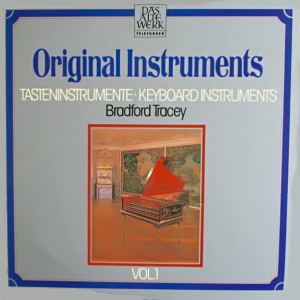 |
3 LP's
- Telefunken 6.35488 EK (p) 1979
|
|
| ORIGINALINSTRUMENTE -
Tasteninstrumente Vol. 1 |
|
|
|
|
|
|
|
|
Long Playing 1
|
|
|
|
| Johann Kaspar Kerll (1627-1693) |
Toccata
I *
|
|
4' 07" |
A1 |
|
Canzona I *
|
|
3' 48" |
A2 |
|
Ciacona
in C *
|
|
2' 58" |
A3 |
|
Toccata III **
|
|
5' 30" |
A4 |
| Johann Pachelbel (1653-1706) |
Ciacona
in C *
|
|
10' 55" |
A5 |
| Johann
Joseph Fux (1660-1741) |
Parthie
in g ***
|
|
20' 09" |
B1 |
|
-
Capriccio · Fuga: Allegretto · La
Superbia: Allegretto · Arietta:
Gustuoso · L'Humilta: Tempo giusto ·
La vera Pace: Affetuoso · Finale:
Allegro |
|
|
|
| Georg Christoph Wagenseil
(1715-1777) |
Divertimento
in F ***
|
|
12' 10" |
B2 |
|
-
Allegro · Andante · Minuetto ·
Allegro assai
|
|
|
|
|
Long Playing 2 |
|
|
|
| Giles Farnaby (um
1565-1640) |
Farmer's
Pavan ****
|
|
4' 55" |
C1 |
|
Why
aske you ** · Mal Sims ·
Muscadin
|
|
6' 13" |
C2 |
|
Tell
me. Daphne ** · A Toye
**/*** |
|
3' 13" |
C3 |
|
Lachrimae
Pavan * |
|
6' 02" |
C4 |
|
Fantasia
10 **** |
|
5' 40" |
C5 |
|
Praeludium
**** · Meridian
Alman · Rosasolis · Tower
Hill |
|
6' 20" |
D1
|
|
The
Flatt Pavan ** · The old
Spanioletta |
|
4' 36" |
D2 |
|
Fantasia
27 * |
|
4' 02" |
D3 |
|
Up
Tails All **** |
|
6' 45" |
D4 |
|
Long Playing 3 |
|
|
|
| Henry Purcell (um
1659-1695) |
Suite
1 in G (Z 660) |
|
3' 17" |
E1 |
|
-
Prelude · Almand · Corant · Minuet |
|
|
|
|
Suite
2 in G (Z 661) |
|
9' 32" |
E2 |
|
-
Prelude · Almand · Corant · Saraband |
|
|
|
|
Suite
3 in G (Z 662) |
|
10' 04" |
E3 |
|
-
Prelude · Almand · Corant · Minuet
(Z 651) · Ground in Gamut (Z 645) |
|
|
|
|
Suite
4 in a (Z 663) |
|
9' 57" |
E4 |
|
-
Prelude · Almand · Corant · Saraband
· 2 Minuets (Z 649, Z 650) |
|
|
|
|
Suite
5 in C (Z 666) |
|
5' 33" |
F1 |
|
-
Prelude · Almand · Corant · Saraband |
|
|
|
|
Suite
6 in D (Z 667) |
|
4' 35" |
F2 |
|
-
Prelude · Almand · Hornpipe'' |
|
|
|
|
Suite
7 in d (Z 668) |
|
11' 30" |
F3 |
|
-
Almand · Corant · Ground (Z D 222) ·
Sefauchi's Farewell (Z 656) · Minuet
(Z T 688) · Hornpipe |
|
|
|
|
Suite
8 in F (Z 669) |
|
6' 15" |
F4 |
|
-
Prelude · Almand · Corant · Minuet |
|
|
|
|
|
|
|
|
Bradford TRACEY,
an Instrumenten der Sammlung Fritz
Neumeyer, Bad Krozingen
|
|
|
|
| Kerll / Pachelbel / Fux /
Wagenseil |
Farnaby |
Purcell |
-
Orgelpositiv, unsigniert,
süddeutsch um 1730 *
|
-
Cembalo von Francesco Nobili, Rom
1695 * |
-
Cembalo nach Ruckers, Antwerpen
1620, von William Dowd, Paris
|
-
Cembalo nach Ruckers, Antwerpen
1620, von William Dowd, Paris 1975
**
|
-
Spinett nach italienischem Vorbild
um 1600 von Martin Skowroneck,
Bremen 1964 **
|
|
-
Cembalo nach Blancher, Paris 1730,
von William Dowd, Paris 1973
***
|
-
Spinettino, unsigniert, um 1600
restauriert von Rudolf Dobernecker
*** |
|
-
Altblockflöte in f' von Thomas
Stanesby, London, um 1700 ****
|
-
Cembalo nach Johannes Ruckers,
antwerpen 1927, von Eckehart
Merzdorf **** |
|
-
Blockflöte in d" (sixth flute) von
Thomas Stanesby jr., London, ca.
1730 *****
|
|
|
|
|
|
|
Luogo
e data di registrazione |
|
Schlos
Bad Krozingen (Germania) - 1977 |
|
|
Registrazione:
live / studio |
|
studio |
|
|
Recording
Supervision
|
|
Paul
Dery |
|
|
Edizione LP |
|
TELEFUNKEN
- 6.35488 EK - (3 LP's - durata
59' 37", 47' 46" & 60' 43") -
(p) 1978 |
|
|
Originale LP
|
|
TOCCATA
- FSM 53 626 - (1 LP - durata
59' 37") - (p) 1978 -
Analogico (Kerll, Pachelbel,
Fux, Wagenseil)
TOCCATA - FSM 53 614 - (1 LP -
durata 47' 46") - (p) 1978 -
Analogico (Farnaby)
TOCCATA - FSM 53 657 - (1 LP -
durata 60' 43") - (p) 1978 -
Analogico (Purcell)
|
|
|
Prima Edizione CD |
|
FSM
Adagio - FCD 91 626 - (1 CD -
durata 60' 07") - (c) 1993 -
AAD (Kerll, Pachelbel, Fux,
Wagenseil)
FSM Adagio - FCD 91 614 - (1
CD - durata 47' 46") - (c)
1993 - AAD (Farnaby)
FSM Adagio - FCD 91 657 - (1
CD - dyrata 60' 43") - (c)
1993 - AAD (Purcell)
|
|
|
Note |
|
Production
by Toccata.
|
|
|
|
|
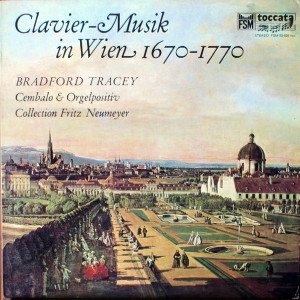 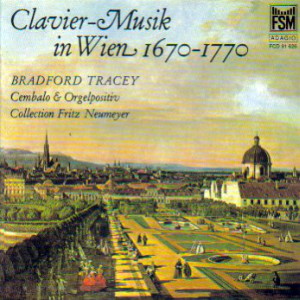 |
Music
for keyboard
instruments in
Vienna
1670-1770
(Kerll,
Pachelbel,
Fux,
Wagenseil)
With the
coronation of
Ferdinand III in
1657, the epoch of
"imperial music
culture" began.
Centered chiefly
in southern
Germany, it was
the imperial court
in Vienna which
set the fashion.
Ferdinand III,
along with his
successors Leopold
I, Joseph I and
Karl VI, not only
commissioned works
and had numerous
significant
compositions
dedicated to them,
but were also
gifted composers
and performers.
Above all, the art
of keyboard
performance was
greatly admired.
It is said that
Leopold I had a
keyboard
instrument in
every room of his
palace appartment.
The imperial court
chapel boasted
organists who had
achieved fame
throughout Europe
as performers and
as composers.
Among them towered
Johann Jakob
Froberger and
Wolfgang Ebner
under Ferdinand
III (1637-1657),
Alessandro
Poglietti, Johann
Kaspar Kerll and
Ferdinand Tobias
Richter under
Leopold I
(1657-1705), and
Gottlieb Muffat
and Johann Joseph
Fux under Karl VI
(1711-1740).
The Viennese
organists,
influenced first
by the Roman
masters Girolamo
Frescobaldi and
Bernardo Pasquini
and later by the
French
clavecinists,
cultivated chiefly
the toccata, the
fuge in the form
of a ricercar, the
canzona or
capriccio as well
as dance and
character pieces
in various forms
and cyclic
relationships.
This recording,
performed on an
assortment of
keyboard
instruments
available at the
time, attempts to
present a cross
section of this
imperial keyboard
art.
Johann Kaspar
Kerll (1627-1695)
worked first under
Archduke Leopold
Wilhelm who
allowed him to
study in Vienna
and Rome and later
employed him as
organist in his
chapel in
Brussels. In 1656
he was hired to
lead the electoral
chapel in Munich
where he wrote
mainly operas and
church music. In
1673, under the
pressure of
various intrigues
he was forced to
move to Vienna,
where Leopold I
hired him as
organist in the
court chapel. Here
he wrote his
keyboard works
which belong to
the most
significant of
their type in the
second half of the
17th century. The
toccatas are
modelled after
Frescobaldi in the
"stylus
fantasticus", a
synthesis of
virtuosic
figuration,
bizarre rhythms
and tense
harmonies; the
Canzona in D
displays
contrapuntal
finesse coupled
with elegant
passage work; the
concise Ciacona in
C is extremely
special due to the
clever
camouflaging of
the ostinato bass
and the rich
technique of
variation.
Johann Pachelbel
(1653-1706),
organist in
Erfurt, Nuremberg
and Stuttgart, did
hommage to the
Viennese keyboard
art by dedicating
his work
"Hexachordum
Apollinis" (1699)
to the imperial
court organist
Ferdinand Tobias
Richter. Although
it is not proven
that Pachelbel
actually lived in
Vienna, it is
certain that he
was influenced by
the keyboard works
of Kerll, whose
courtly style he
applied to the
realm of the
middle class city.
The large, richly
decorated Ciacona
in C is without a
doubt intented for
performance on the
house organ or the
harpsichord.
Johann Joseph Fux
(1660-1741), Karl
VI’s
"hofkapellmeister",
is remembered
today mainly as
the author of the
text book "Gradus
ad Parnassum"
(1725) and as a
master of
counterpoint. His
keyboard works,
which he wrote in
his later years,
prove that he was
also a master of
the new "galant"
style as well, and
these works can
stand equally next
to the keyboard
compositions of
Kuhnau, Fischer,
Handel and
Mattheson. In
these works we can
clearly view the
change from the
Baroque "suite" -
a more or less
given order of
various dance
movements - to the
"divertimento" - a
series of
character pieces
in which various
moods are
portrayed. The
Parthie in G
begins with an
expressive,
recitative-like,
freeformed prelude
called "Capriccio"
which is followed
by a "Fuga". After
this scholerly
introduction, the
galant style
follows - marked
by the cantabile
melody in the slow
movements and the
spirited rhythms
in the 2/4 notated
fast movements.
This style became
the hallmark of
the Viennese
Roccoco.
The main
representative of
this style was
Georg Christoph
Wagenseil
(1715-1777), pupil
of Fux, court
composer and
keyboard teacher
to the imperial
court children.
The Divertimento
in F was published
in 1761 in the
printed collection
"VI Divertimenti
da Camera" Opus 3.
It is dedicated by
the composer to
his most talented
pupil, Archduchess
Maria Elisabeth,
who died in 1808
as abess of a
seminary which her
mother had
founded. Altough
harmonically less
demanding than the
compositions of
his teacher Fux,
these pieces with
their elegant
melodic flow and
rhythmic wit
highly influenced
the young Mozart
who was to meet
Wagenseil a year
later in Schloss
Schonbrunn.
|
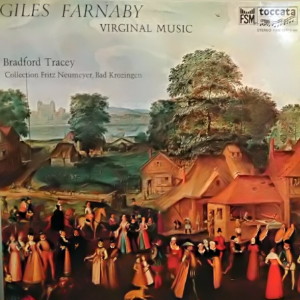 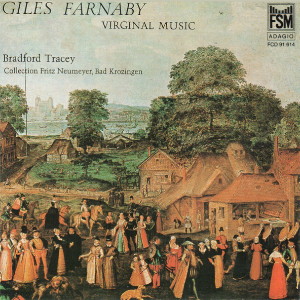 |
Giles
Farnaby -
Virginal Music
In the long
list of
illustrious
Elizabethan
keyboard
composers, Giles
Farnaby remains a
unique and
fascinating
exception. As
opposed to such
professional
musicans as
Tallis, Byrd,
Bull, Morley and
Gibbons, Farnaby
was an amateur - a
joiner by trade.
Only a few
fragments of
information about
his life exist,
painting a rather
patchy picture of
his involvement in
music. Though an
amateur musician,
he was certainly
not untrained. In
1592 he obtained
his Bachelor of
Music degree - the
same day John Bull
received his
doctorate. It is
probable that Bull
was Farnaby`s
teacher. Indeed,
if one is to find
anyone's influence
on his musical
style, then it is
Bull's. But
Farnaby and Bull
remain opposites
in most respects.
Bull's music was
powerfull, dynamic
and virtuosic; his
carreer and
reputation were
international and
spiced with
travel. Farnaby
posessed an
instinctive
musical creativity
while his life was
that of a simple
middle class
craftsman. Perhaps
Farnaby had Bull
in mind when he
described himself
as "a sely
sparrowe who
presumeth to
chirpe in the
presence of the
melodious
Nightingall".
But what
Farnaby may have
lacked in
professional
training, he made
up for with his
creative genious.
His talent was
instinctive. The
freshness of his
invention keeps
his music
homogeneous. The
best example is
"Up Tails All"
with its eighteen
short variations.
One variation
grows naturally
out of the other.
He even includes a
Pavane and
Galiarde without
disrupting the
continuity.
His
Fantasia 10 is one
of his best
examples of fancy.
The dance in
triple rhythm with
its variations,
development and
rhythmic
juxtapositions
frees him from
initial
Melancolia,
expressed
poignantly in a
subtle treatment
of the theme based
on the descending
fourth. The
Fantasia 27 is a
transcription of a
canzonet-type
vocal composition
- probably
inspired by his
canzonet "Daphne
on the Rainbow",
His "Lachrymae
Pavan" is unlike
the other
Fitzwilliam
settings of the
Dowland song (Byrd
and Morley) in
that he pays great
attention to text,
setting it in
madrigal form with
detailed
word-painting in
all voices. His
"Farmer`s Pavan"
is warm and
personal,
resembling Byrd`s
style. "Mal Sims"
or "Molly" was a
well-known
prostitute, here
wittily set in
dialogue form.
"Muscadin" or
"Kempe’s Morris"
refers to Will
Kemp, the famous
comedian who
danced a morris
dance from London
to Norwich in 1599
- this probably
being the tune to
which he danced.
"Tell mee,
Daphne", "Tower
Hill" and "A Toye"
are small jewels,
unsurpassed in
melodic beauty.
"Virginal¢"was
the generic term
applied to all
forms of plucked
keyboard
instruments in
England. The
virginals found in
England during the
16th and 17th
centuries were
either Italian or
Flemish in origin.
The instruments
used on this
recording
represent a cross
section of the
virginals
available in
England during
Farnaby's
lifetime. The
Italian spinet, or
virginal, is very
similar to the
instrument
believed to have
belonged to Queen
Elizabeth I. The
spinettino, at
four foot pitch,
is used as a solo
instrument as well
as an upper manual
to the Italian
spinet. The
harpsichord by
Francesco Nobili,
though somewhat
later, is built in
the earlier
Italian tradition.
All the
instruments used
on this recording
are mean-tone
tuned.
|
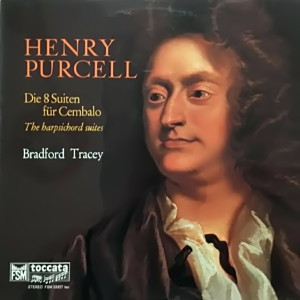 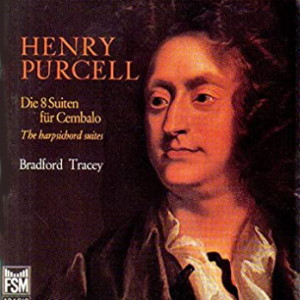 |
Henry
Purcell - The
harpsichord
suites
With
regard to forms,
styles and
techniques,
England's primary
contributions to
that complex of
musical
characteristics
which we today
identify as
"Baroque" were
developed within her
late sixteenth and
early
seventeenth-century
schools of keyboard
music. Abstract
patterns of melodic
sequences and
variations, such as
those familiar to us
in the works of
Thomas Tallis
(1505-1585), William
Byrd (1542-1623),
Thomas Morley
(1557-1602), Orlando
Gibbons (1583-1625),
along with a few
others like them,
provided beginnings
for one of the most
important concepts
of the musical
Baroque - i. e. that
of an "absolute
music". This
important new
concept, the nurture
of which in England
is further attested
to by the English
fancy, appears
nowhere more
significantly than
in the keyboard
suite, which came
into prominence as a
fully developed form
only towards the end
of the seventeenth
century in the works
of Matthew Locke
(1622-1677),
Giovanni Battista
Draghi (b. ca. 1640)
and Henry Purcell
(1659-1695).
Though undoubtedly
influenced by Johann
Jacob Froberger
(1616-1667) and by
various Italian
masters of the
suite, Purcell
remained true to the
English tradition,
largely by merit of
his meticulous study
of the music of the
above-named English
masters during the
formative stages of
his own career.
Since he was without
doubt England’s most
important native
composer during the
Baroque, it is not
surprising to
discover that
Purcell made a very
considerable
contribution to
England's keyboard
tradition, even
though his work in
this vein has not
yet been properly
evaluated by the
musicological
fraternity.
Purcell's keyboard
pieces, though
modest in number -
there are only
sixteen
miscellaneous
pieces, twentyfour
transcriptions and
eight suites - are
fully worthy of the
"English Orpheus"
and on the whole do
not deserve to be
left in the
obscurity in which
they presently
exist. To be sure,
even the suites do
not call forth the
technical virtuosity
which, in terms of
popularity might
bring them into even
that modest vogue
enjoyed by the
keyboard works of
Bach and Handel. But
musically Purcell's
suites compare
favorably with any
harpsichord music of
the mid-Baroque, and
well reward the
attention of those
"who carry musical
souls about them",
to use Purcell's own
phrase from the
trio-sonatas he
published in 1683.
Perhaps the most
striking
characteristic of
these works, at
least from the point
of view of the
connoisseur of early
keyboard music, is
their highly
individual,
subjective and, at
times, even dramatic
character. This
quality, which
parallels in
importance the
development of
"persona" in song
represents another
important feature of
Baroque style. It
may be detected to a
certain extent in
the keyboard pieces
of Orlando Gibbons,
Munday and Tomkins.
But for the most
part, it was Purcell
who brought this
quality to the fore
in English keyboard
music.
Among the suites,
which, incidentally,
consist of only
three or four
movements, and not
five as in the
contemporary
continental suite,
this subjective,
dramatic quality is
to be found
thoughout, but is
particularly
noticeable in the
Prelude to Suite No.
2 in G-minor (Z*
661); in the Prelude
and Almand of Suite
No. 6 in D Major (Z
667); and throughout
Suites Nos. 7 and 8
(Z 668-9). There are
genuine musical
climaxes in these
movements, which are
quite dramatic, even
though the
expressive
limitations of the
harpsichord are such
as to restain any
crescendo exept that
of rhythmic
intensity and
increasing density
of texture.
Although still in
Purcell's time the
keyboard suite
remained a very
loosely defined
form, his eight
compositions in this
genre are remarkably
consistent, being
made up, generally,
of four movements:
Prelude, Almand,
Corant and Saraband
(or Menuet or
Hornpipe). (In this
regard, he seems
even more consistent
than Matthew Locke,
possibly his master,
and Giovanni
Battista Draghi,
whose works still
reveal something of
the character of the
earlier "aleatoric"
of selective suite).
Purcell's Preludes
all appear to belong
to the class of
measured,
specifically notated
introductory
movements. However a
few, such as those
in F Major (Z 669)
and A Minor (Z 663)
reveal
characteristics of
the older unmeasured
and improvisatory
prelude. The Prelude
in C Major (Z 666),
on the other hand,
clearly conforms to
the kind advanced by
the Italians - a
kind which is
similar in many ways
to the invention,
with its motivic
rhythmic patterns,
closely imitative
style and thematic
coherence.
Incidentally, the
Italian character of
this movement is
further reinforced
by the consecutive
sevenths progression
which makes up the
final precadential
passage, a technique
which Purcell
himself had
recommended in his
remarks in the final
section of the
Twelfth Edition of
Playford's
Introduction to the
Skill of Music
(1694). Some of
Purcell's Corant
movements also
reveal Italian
influence, as do
those such as the C
Major Corant, which
are straightforward
and simple, with
only a few hemiolic
shifts and
syncopations. On the
other hand, those
like the Courante in
A Minor, with its
more sophisticated
style, its
complicated rhythmic
interplay and its
more ornate melodic
figuration, reveal
French influence.
The final movements
in triple meter call
for little comment,
except for the
"Hornpipes" in the
Suites in D Major (Z
667) and D Minor (Z
668), which show the
force of English
tradition - a force
which in these
suites, as in almost
all other works by
Purcell, remains
predominant despite
frequent instances
of French and
Italian influence
which may be pointed
out here and there.
Z * = Franklin B.
Zimmerman: Henry
Purcell
An Analytical
Catalogue of his
Music (Macmillan.
London 1963)
|
|
|
|

